7.3.2
Natural Selection & Evolution
Survival
Survival
Individuals must survive and reproduce to pass on their genes to their offspring. Whether an individual is capable of surviving or not is influenced by the following factors:


Predation
Predation
- Predation can decrease the probability of survival.
- If an individual is exposed to high predation, they are more likely to be eaten by a predator.
- If an individual is better at avoiding predators, they are more likely to survive and reproduce.
- The genes that allow an individual to avoid predation are more likely to be passed onto offspring.
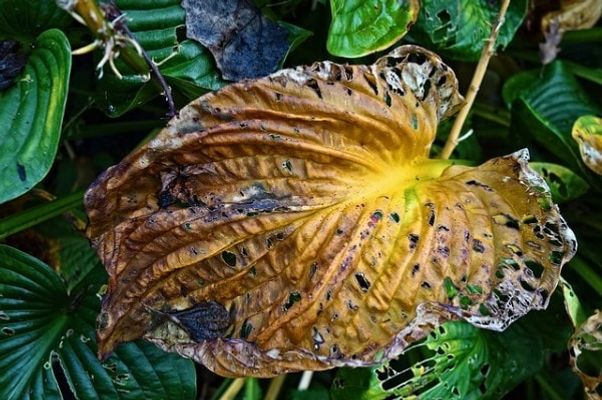

Disease
Disease
- Disease can decrease the probability of survival.
- If an individual is better at combatting disease or avoiding infection, they are more likely to survive and reproduce.
- The genes that allow an individual to avoid disease are more likely to be passed onto offspring.
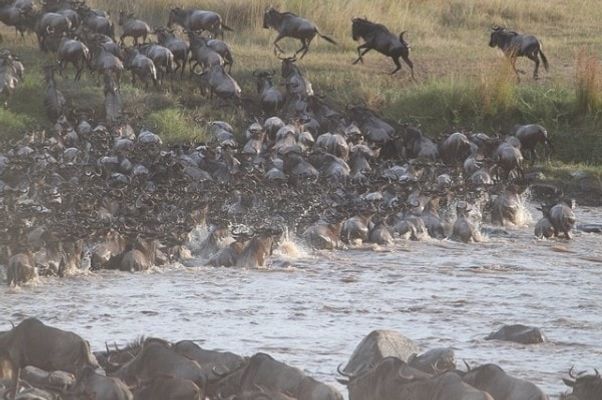

Competition
Competition
- Competition can decrease the probability of survival.
- Competition can exist between species (interspecific) or within species (intraspecific).
- If an individual is better at outcompeting other individuals, they are more likely to survive and reproduce.
- The genes that allow an individual to outcompete are more likely to be passed onto offspring.
Natural Selection and Evolution
Natural Selection and Evolution
Natural selection is the process where the frequency of alleles in a population changes over time. Natural selection is a process that gives rise to evolution.
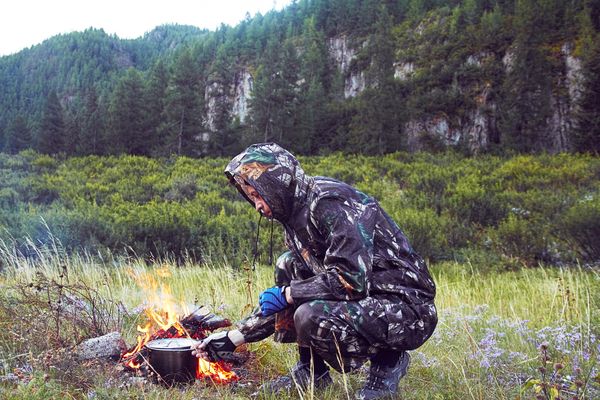

Selective advantage
Selective advantage
- Genetic variation exists between individuals in a population.
- Some individuals will be more likely to survive (e.g. by being better at fighting disease) than others.
- Individuals that are better at surviving than others have a selective advantage.
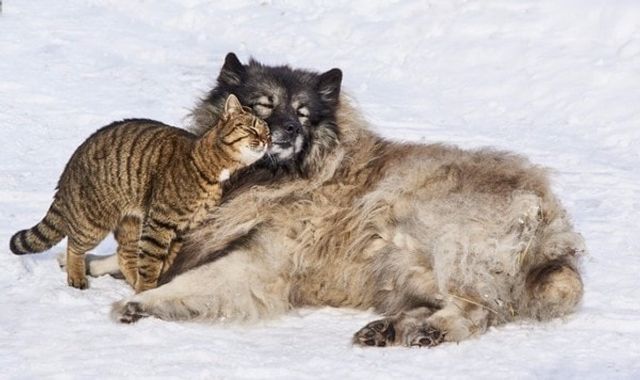

Producing offspring
Producing offspring
- Individuals with a selective advantage are more likely to survive to reproduce than others.
- This means that the genes of an individual with a selective advantage are more likely to be passed onto offspring than the genes of an individual without a selective advantage.
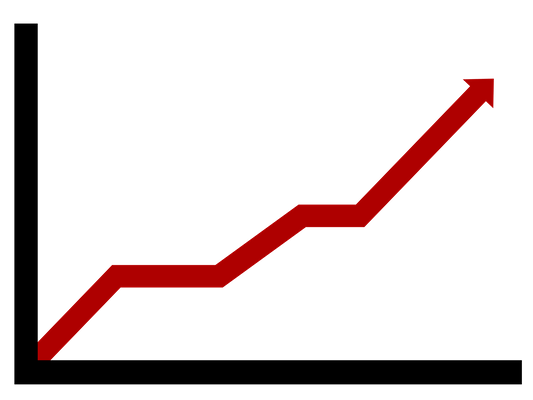

Increasing allele frequencies
Increasing allele frequencies
- Individuals with a selective advantage are more likely to pass on their beneficial alleles than other individuals.
- The next generation is more likely to have alleles that provide a selective advantage than alleles that do not.
- This generation is also more likely to survive to reproduce and pass on their genes.
- This causes the alleles that provide a selective advantage to increase in frequency in the population.
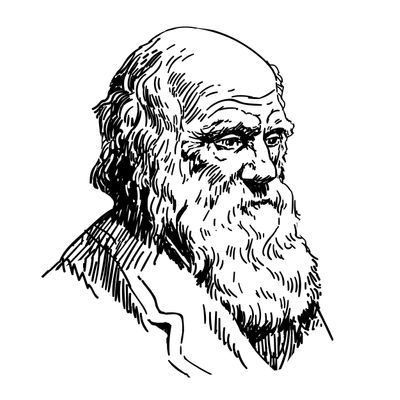

Natural selection
Natural selection
- The process where the frequency of beneficial alleles increases over time is called natural selection.
- Natural selection controls the frequency of alleles in a population.
- If a harmful allele develops in an individual, this individual is less likely to survive and the harmful allele will decrease in frequency. This is also natural selection.


Evolution
Evolution
- The process of natural selection gives rise to evolution.
- Evolution is defined as a change in allele frequencies over time.
- E.g. The evolution of humans is the change in allele frequencies that has taken place over millions of years. This change has been driven by natural selection.
1Biological Molecules
1.1Monomers & Polymers
1.2Carbohydrates
1.3Lipids
1.4Proteins
1.4.1The Peptide Chain
1.4.2Investigating Proteins
1.4.3Primary & Secondary Protein Structure
1.4.4Tertiary & Quaternary Protein Structure
1.4.5Enzymes
1.4.6Factors Affecting Enzyme Activity
1.4.7Enzyme-Controlled Reactions
1.4.8End of Topic Test - Lipids & Proteins
1.4.9A-A* (AO3/4) - Enzymes
1.4.10A-A* (AO3/4) - Proteins
1.4.11Diagnostic Misconceptions - Enzyme Inhibitors
1.5Nucleic Acids
1.6ATP
1.7Water
1.8Inorganic Ions
2Cells
2.1Cell Structure
2.2Mitosis & Cancer
2.3Transport Across Cell Membrane
2.4Cell Recognition & the Immune System
2.4.1Immune System
2.4.2Phagocytosis
2.4.3T Lymphocytes
2.4.4B Lymphocytes
2.4.5Antibodies
2.4.6Primary & Secondary Response
2.4.7Vaccines
2.4.8HIV
2.4.9Ethical Issues
2.4.10End of Topic Test - Immune System
2.4.11Exam-Style Question - Immune System
2.4.12A-A* (AO3/4) - Immune System
2.4.13Diagnostic Misconceptions - Humoral vs Cellular
3Substance Exchange
3.1Surface Area to Volume Ratio
3.2Gas Exchange
3.3Digestion & Absorption
3.4Mass Transport
3.4.1Haemoglobin
3.4.2Oxygen Transport
3.4.3The Circulatory System
3.4.4The Heart
3.4.5Blood Vessels
3.4.6Cardiovascular Disease
3.4.7Heart Dissection
3.4.8Xylem
3.4.9Phloem
3.4.10Investigating Plant Transport
3.4.11End of Topic Test - Mass Transport
3.4.12A-A* (AO3/4) - Mass Transport
3.4.13Diagnostic Misconceptions - Concentration Gradient
3.4.14Diagnostic Misconceptions - Cardiac Cycle
3.4.15Diagnostic Misconceptions - Carrying Capacity
3.4.16Diagnostic Misconceptions - Translocation
4Genetic Information & Variation
4.1DNA, Genes & Chromosomes
4.2DNA & Protein Synthesis
4.3Mutations & Meiosis
4.4Genetic Diversity & Adaptation
4.5Species & Taxonomy
4.6Biodiversity Within a Community
4.7Investigating Diversity
5Energy Transfers (A2 only)
5.1Photosynthesis
5.1.1Overview of Photosynthesis
5.1.2Photoionisation of Chlorophyll
5.1.3Production of ATP & Reduced NADP
5.1.4Cyclic Photophosphorylation
5.1.5Light-Independent Reaction
5.1.6A-A* (AO3/4) - Photosynthesis Reactions
5.1.7Limiting Factors
5.1.8Photosynthesis Experiments
5.1.9End of Topic Test - Photosynthesis
5.1.10A-A* (AO3/4) - Photosynthesis
5.2Respiration
5.2.1Overview of Respiration
5.2.2Anaerobic Respiration
5.2.3A-A* (AO3/4) - Anaerobic Respiration
5.2.4The Link Reaction
5.2.5The Krebs Cycle
5.2.6Oxidative Phosphorylation
5.2.7Respiration Experiments
5.2.8End of Topic Test - Respiration
5.2.9A-A* (AO3/4) - Respiration
5.2.10Diagnostic Misconceptions - Aerobic vs Anaerobic
5.3Energy & Ecosystems
6Responding to Change (A2 only)
6.1Nervous Communication
6.2Nervous Coordination
6.3Muscle Contraction
6.4Homeostasis
6.4.1Overview of Homeostasis
6.4.2Blood Glucose Concentration
6.4.3Controlling Blood Glucose Concentration
6.4.4End of Topic Test - Blood Glucose
6.4.5Primary & Secondary Messengers
6.4.6Diabetes Mellitus
6.4.7Measuring Glucose Concentration
6.4.8Osmoregulation
6.4.9Controlling Blood Water Potential
6.4.10ADH
6.4.11End of Topic Test - Diabetes & Osmoregulation
6.4.12A-A* (AO3/4) - Homeostasis
6.4.13Diagnostic Misconceptions - Effect of ADH
7Genetics & Ecosystems (A2 only)
7.1Genetics
7.2Populations
7.3Evolution
7.3.1Variation
7.3.2Natural Selection & Evolution
7.3.3End of Topic Test - Populations & Evolution
7.3.4Types of Selection
7.3.5Types of Selection Summary
7.3.6Overview of Speciation
7.3.7Causes of Speciation
7.3.8Diversity
7.3.9End of Topic Test - Selection & Speciation
7.3.10A-A* (AO3/4) - Populations & Evolution
7.3.11Diagnostic Misconceptions - Types of Speciation
8The Control of Gene Expression (A2 only)
8.1Mutation
8.2Gene Expression
8.2.1Stem Cells
8.2.2Stem Cells in Disease
8.2.3End of Topic Test - Mutation & Gene Epression
8.2.4A-A* (AO3/4) - Mutation & Stem Cells
8.2.5Regulating Transcription
8.2.6Epigenetics
8.2.7Epigenetics & Disease
8.2.8Regulating Translation
8.2.9Experimental Data
8.2.10End of Topic Test - Transcription & Translation
8.2.11Tumours
8.2.12Correlations & Causes
8.2.13Prevention & Treatment
8.2.14End of Topic Test - Cancer
8.2.15A-A* (AO3/4) - Gene Expression & Cancer
8.3Genome Projects
Jump to other topics
1Biological Molecules
1.1Monomers & Polymers
1.2Carbohydrates
1.3Lipids
1.4Proteins
1.4.1The Peptide Chain
1.4.2Investigating Proteins
1.4.3Primary & Secondary Protein Structure
1.4.4Tertiary & Quaternary Protein Structure
1.4.5Enzymes
1.4.6Factors Affecting Enzyme Activity
1.4.7Enzyme-Controlled Reactions
1.4.8End of Topic Test - Lipids & Proteins
1.4.9A-A* (AO3/4) - Enzymes
1.4.10A-A* (AO3/4) - Proteins
1.4.11Diagnostic Misconceptions - Enzyme Inhibitors
1.5Nucleic Acids
1.6ATP
1.7Water
1.8Inorganic Ions
2Cells
2.1Cell Structure
2.2Mitosis & Cancer
2.3Transport Across Cell Membrane
2.4Cell Recognition & the Immune System
2.4.1Immune System
2.4.2Phagocytosis
2.4.3T Lymphocytes
2.4.4B Lymphocytes
2.4.5Antibodies
2.4.6Primary & Secondary Response
2.4.7Vaccines
2.4.8HIV
2.4.9Ethical Issues
2.4.10End of Topic Test - Immune System
2.4.11Exam-Style Question - Immune System
2.4.12A-A* (AO3/4) - Immune System
2.4.13Diagnostic Misconceptions - Humoral vs Cellular
3Substance Exchange
3.1Surface Area to Volume Ratio
3.2Gas Exchange
3.3Digestion & Absorption
3.4Mass Transport
3.4.1Haemoglobin
3.4.2Oxygen Transport
3.4.3The Circulatory System
3.4.4The Heart
3.4.5Blood Vessels
3.4.6Cardiovascular Disease
3.4.7Heart Dissection
3.4.8Xylem
3.4.9Phloem
3.4.10Investigating Plant Transport
3.4.11End of Topic Test - Mass Transport
3.4.12A-A* (AO3/4) - Mass Transport
3.4.13Diagnostic Misconceptions - Concentration Gradient
3.4.14Diagnostic Misconceptions - Cardiac Cycle
3.4.15Diagnostic Misconceptions - Carrying Capacity
3.4.16Diagnostic Misconceptions - Translocation
4Genetic Information & Variation
4.1DNA, Genes & Chromosomes
4.2DNA & Protein Synthesis
4.3Mutations & Meiosis
4.4Genetic Diversity & Adaptation
4.5Species & Taxonomy
4.6Biodiversity Within a Community
4.7Investigating Diversity
5Energy Transfers (A2 only)
5.1Photosynthesis
5.1.1Overview of Photosynthesis
5.1.2Photoionisation of Chlorophyll
5.1.3Production of ATP & Reduced NADP
5.1.4Cyclic Photophosphorylation
5.1.5Light-Independent Reaction
5.1.6A-A* (AO3/4) - Photosynthesis Reactions
5.1.7Limiting Factors
5.1.8Photosynthesis Experiments
5.1.9End of Topic Test - Photosynthesis
5.1.10A-A* (AO3/4) - Photosynthesis
5.2Respiration
5.2.1Overview of Respiration
5.2.2Anaerobic Respiration
5.2.3A-A* (AO3/4) - Anaerobic Respiration
5.2.4The Link Reaction
5.2.5The Krebs Cycle
5.2.6Oxidative Phosphorylation
5.2.7Respiration Experiments
5.2.8End of Topic Test - Respiration
5.2.9A-A* (AO3/4) - Respiration
5.2.10Diagnostic Misconceptions - Aerobic vs Anaerobic
5.3Energy & Ecosystems
6Responding to Change (A2 only)
6.1Nervous Communication
6.2Nervous Coordination
6.3Muscle Contraction
6.4Homeostasis
6.4.1Overview of Homeostasis
6.4.2Blood Glucose Concentration
6.4.3Controlling Blood Glucose Concentration
6.4.4End of Topic Test - Blood Glucose
6.4.5Primary & Secondary Messengers
6.4.6Diabetes Mellitus
6.4.7Measuring Glucose Concentration
6.4.8Osmoregulation
6.4.9Controlling Blood Water Potential
6.4.10ADH
6.4.11End of Topic Test - Diabetes & Osmoregulation
6.4.12A-A* (AO3/4) - Homeostasis
6.4.13Diagnostic Misconceptions - Effect of ADH
7Genetics & Ecosystems (A2 only)
7.1Genetics
7.2Populations
7.3Evolution
7.3.1Variation
7.3.2Natural Selection & Evolution
7.3.3End of Topic Test - Populations & Evolution
7.3.4Types of Selection
7.3.5Types of Selection Summary
7.3.6Overview of Speciation
7.3.7Causes of Speciation
7.3.8Diversity
7.3.9End of Topic Test - Selection & Speciation
7.3.10A-A* (AO3/4) - Populations & Evolution
7.3.11Diagnostic Misconceptions - Types of Speciation
8The Control of Gene Expression (A2 only)
8.1Mutation
8.2Gene Expression
8.2.1Stem Cells
8.2.2Stem Cells in Disease
8.2.3End of Topic Test - Mutation & Gene Epression
8.2.4A-A* (AO3/4) - Mutation & Stem Cells
8.2.5Regulating Transcription
8.2.6Epigenetics
8.2.7Epigenetics & Disease
8.2.8Regulating Translation
8.2.9Experimental Data
8.2.10End of Topic Test - Transcription & Translation
8.2.11Tumours
8.2.12Correlations & Causes
8.2.13Prevention & Treatment
8.2.14End of Topic Test - Cancer
8.2.15A-A* (AO3/4) - Gene Expression & Cancer
8.3Genome Projects
Unlock your full potential with Seneca Premium
Unlimited access to 10,000+ open-ended exam questions
Mini-mock exams based on your study history
Unlock 800+ premium courses & e-books